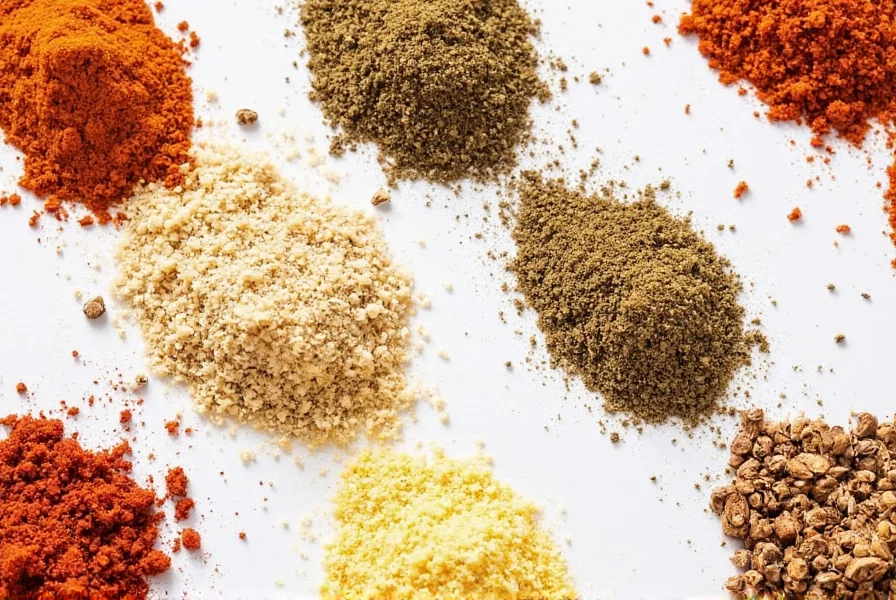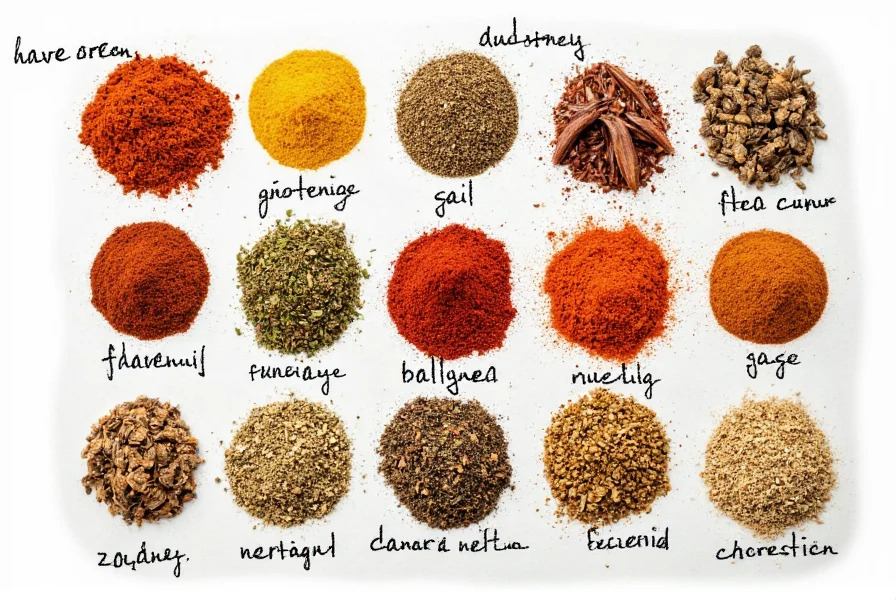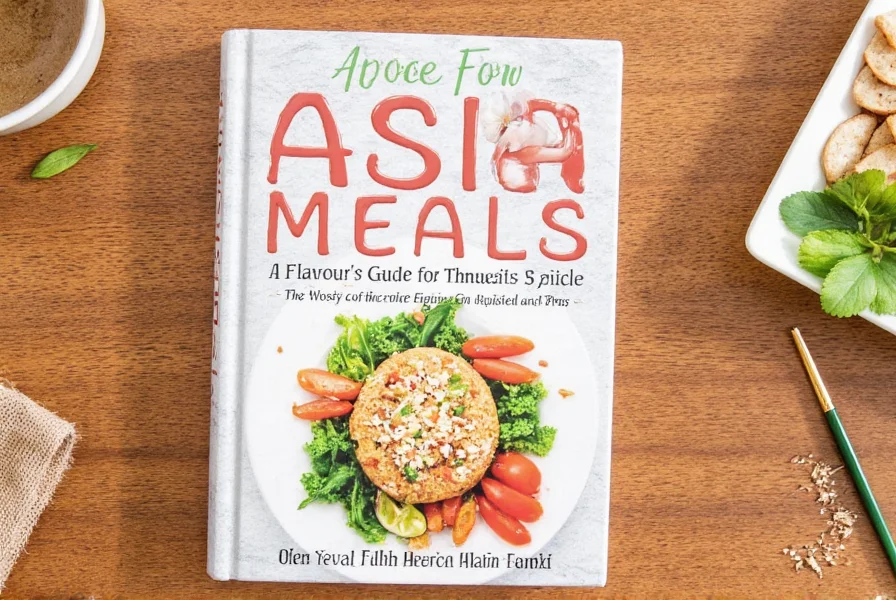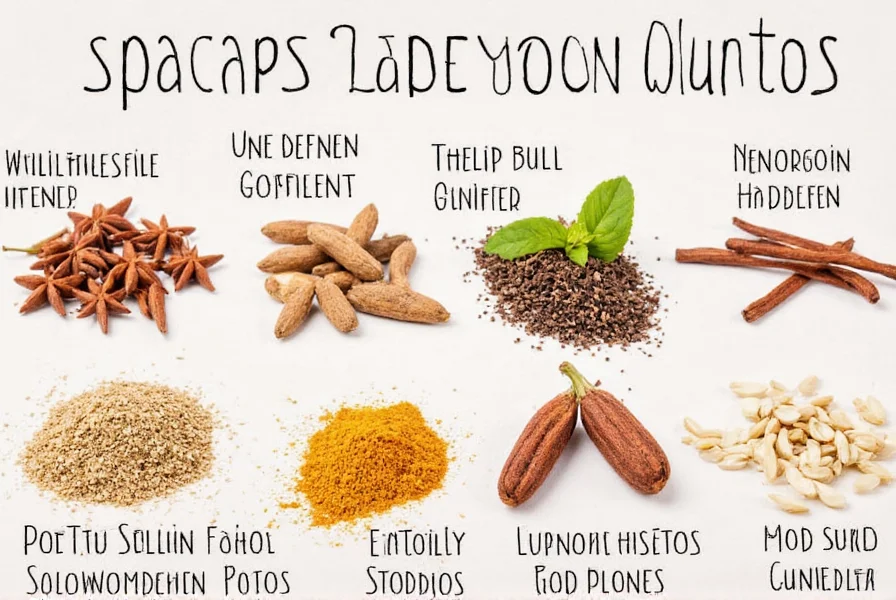Table of Contents
Quick Reference: Essential English Spice Names
When searching for "spice names in English," you're likely looking for accurate translations and proper terminology to navigate recipes, grocery stores, or cooking conversations. This comprehensive guide provides the correct English names for common spices, their pronunciation, and practical usage information that goes beyond simple translation.

Understanding spice nomenclature in English is crucial for both cooking and language learning. Many spices have different names across English-speaking regions or when translated from other languages, creating confusion for non-native speakers and culinary enthusiasts.
| Spice Name (English) | Common Pronunciation | Linguistic Origin | Key Usage Context |
|---|---|---|---|
| Cumin | KOO-min | From Arabic "kammūn" | Essential in Indian, Mexican, and Middle Eastern cooking; often confused with caraway |
| Paprika | puh-PREE-kuh | From Hungarian "paprika" | Hungarian vs. Spanish varieties differ significantly in heat level; not just a coloring agent |
| Cinnamon | SIN-uh-muhn | From Greek "kinnamon" | Ceylon (true cinnamon) vs. Cassia; Americans often use "cinnamon" for both |
| Ginger | JIN-jer | From Old English "gingifer" | Fresh vs. dried have different applications; often misspelled as "gingerroot" |
| Coriander (seeds) | KOR-ee-an-der | From Greek "koriannon" | UK: entire plant; US: seeds only (leaves are cilantro) |
| Cilantro (leaves) | si-LAN-tro | From Spanish "coriandro" | US term for coriander leaves; not used in British English |
| Clove | KLOHV | From Latin "clavus" (nail) | Whole vs. ground; often misspelled as "clove spice" redundantly |
| Nutmeg | NUT-meg | From Dutch "nootmuskaat" | Always used freshly grated; pre-ground loses potency quickly |
| Cardamom | KAR-duh-dom | From Greek "kardamomon" | Green (true) vs. black cardamom; often mislabeled in stores |
| Turmeric | TUR-mer-ik | From Latin "terra merita" | Key ingredient in curry powder; not the same as saffron |

Pronunciation Guide for Common Spices
Proper pronunciation is often the biggest hurdle when discussing spices in English. Unlike spelling, pronunciation varies significantly across English-speaking regions and frequently doesn't follow standard phonetic rules. Here's what you need to know:
- Cumin is consistently pronounced "KOO-min" in both American and British English, though some mistakenly say "CUH-min"
- Paprika has three common pronunciations: "puh-PREE-kuh" (most common in US), "PAH-pri-kuh" (closer to Hungarian), and "puh-PREE-ka" (British variant)
- Coriander vs. Cilantro is the most significant regional difference: British English uses "coriander" for both seeds and leaves, while American English uses "coriander" for seeds and "cilantro" for the fresh leaves
- Ginger is always pronounced "JIN-jer" - never with a hard "G" sound as in some other languages
- Thyme (not in table) is often mispronounced as "tim" - the correct pronunciation is "TAIM" with a long "I"

Language Differences in Spice Terminology
Understanding the regional variations in English spice terminology can prevent confusion in recipes and conversations. These differences often stem from historical trade routes and colonial influences:
American vs. British English
- Coriander/Cilantro: The most notable difference - Americans use "cilantro" for the fresh herb and "coriander" for the seeds, while British English uses "coriander" for both
- Pepper: In British recipes, "pepper" often refers to black pepper specifically, while Americans might say "black pepper" to distinguish from other types
- Herbs de Provence: In American contexts, this blend is often mistakenly called "Provençal herbs" when following French recipes
Common Translation Errors
- "Indian Saffron" is often used for turmeric - true saffron is completely different and much more expensive
- "Mexican Oregano" is botanically different from Mediterranean oregano and has a distinct flavor profile
- "Vanilla" is often misspelled as "vainilla" when translating from Spanish

Linguistic Origins of Spice Names
Many English spice names have fascinating etymological histories that explain their current usage:
- Cinnamon comes from the Greek "kinnamon," which likely derived from the Hebrew word "qinnamon." The confusion between Ceylon cinnamon and cassia (often sold as "cinnamon" in America) stems from historical trade practices
- Ginger entered English through Old French "gingivre" from Latin "zingiber," ultimately from the Sanskrit "śṛṅgavera" (meaning "horn body" referring to its shape)
- Nutmeg gets its name from the Dutch "nootmuskaat" (nut + musk), reflecting both its appearance and aromatic properties
- Cardamom comes from the Greek "kardamomon," from "kardamon" (cress), likely because both plants have a similar pungent aroma
Proper Usage in Cooking and Conversation
Knowing how to correctly use spice terminology in context is as important as knowing the names themselves:
Recipe Context Clues
- When a recipe says "fresh herbs," it typically means leafy plants like basil or cilantro, not dried spices
- "Ground" vs. "whole" specifications matter - "ground cinnamon" vs. "cinnamon stick" have different applications
- "To taste" instructions for spices usually refer to personal preference, but for potent spices like cloves, even small amounts matter
Shopping Tips
- In American stores, look for "coriander seeds" specifically if you need the seeds, not the fresh herb
- "Curry powder" is a British invention - authentic Indian cooking typically uses individual spices rather than pre-mixed curry powder
- When asking for help in stores, be specific: "Do you have whole cardamom pods or just ground cardamom?"
Common Mistakes Non-Native Speakers Make
Based on linguistic analysis of common errors, here are the most frequent mistakes and how to avoid them:
- Redundant phrasing: "Clove spice" (clove is already a spice) or "ginger root" (while technically accurate, native speakers typically just say "ginger")
- Misidentifying related ingredients: Using "coriander" for both seeds and leaves in American contexts (where they distinguish between coriander seeds and cilantro)
- Incorrect pluralization: "Cinnamons" (cinnamon is generally uncountable in this context)
- Confusing similar-sounding terms: "Cumin" vs. "Caraway" (different spices with distinct flavors)
- Literal translations: Calling turmeric "Indian saffron" (true saffron is completely different)
Advanced Reference: Regional Variations
For serious culinary enthusiasts and language learners, understanding these nuanced regional differences is essential:
What's the difference between 'coriander' and 'cilantro'?
In British English, 'coriander' refers to both the seeds and fresh leaves of the plant. In American English, 'coriander' refers only to the seeds, while 'cilantro' is used for the fresh leaves. This distinction is critical when following recipes from different English-speaking regions.
Why do some spices have completely different names in American and British recipes?
Many differences stem from historical trade routes and colonial influences. For example, British recipes often use 'coriander' for both seeds and leaves because British traders encountered the plant through Indian and Middle Eastern sources, while American usage reflects Spanish and Mexican culinary influences where 'cilantro' is the common term for the fresh herb.
How do I know which type of cinnamon to use in a recipe?
True cinnamon (Ceylon cinnamon) is lighter in color, has more layers, and is milder in flavor. Cassia (often labeled simply as 'cinnamon' in the US) is darker, harder, and more pungent. For delicate desserts, use Ceylon; for robust dishes like curries or chilis, cassia works better. If a recipe doesn't specify, American recipes typically assume cassia while British recipes may mean true cinnamon.
Why is turmeric sometimes called 'Indian saffron'?
Turmeric is sometimes mistakenly called 'Indian saffron' because it provides a similar yellow color at a fraction of saffron's cost. However, they are completely different spices - saffron comes from crocus flowers and has a distinctive floral flavor, while turmeric is a root with an earthy, slightly bitter taste. This misnomer can lead to recipe errors as they're not interchangeable.
What's the proper way to ask for spices in an English-speaking grocery store?
Be specific about form and variety: 'Do you have whole cardamom pods?' or 'Is this Madras curry powder or another variety?' For fresh herbs, specify 'bunch of cilantro' (US) or 'coriander leaves' (UK). When asking for help, 'I'm looking for the spice used in traditional garam masala - is it cardamom or something else?' shows you understand the context.
How can I improve my spice vocabulary for cooking shows and recipes?
Watch cooking shows from different English-speaking regions to hear authentic usage. Pay attention to how chefs specify 'freshly ground black pepper' versus just 'pepper,' or 'whole cumin seeds' versus 'ground cumin.' Read recipes carefully noting context clues - 'add the coriander' in a British recipe likely means the seeds, while in an American recipe it might refer to fresh cilantro. Practice using the terms in context rather than memorizing isolated words.










 浙公网安备
33010002000092号
浙公网安备
33010002000092号 浙B2-20120091-4
浙B2-20120091-4